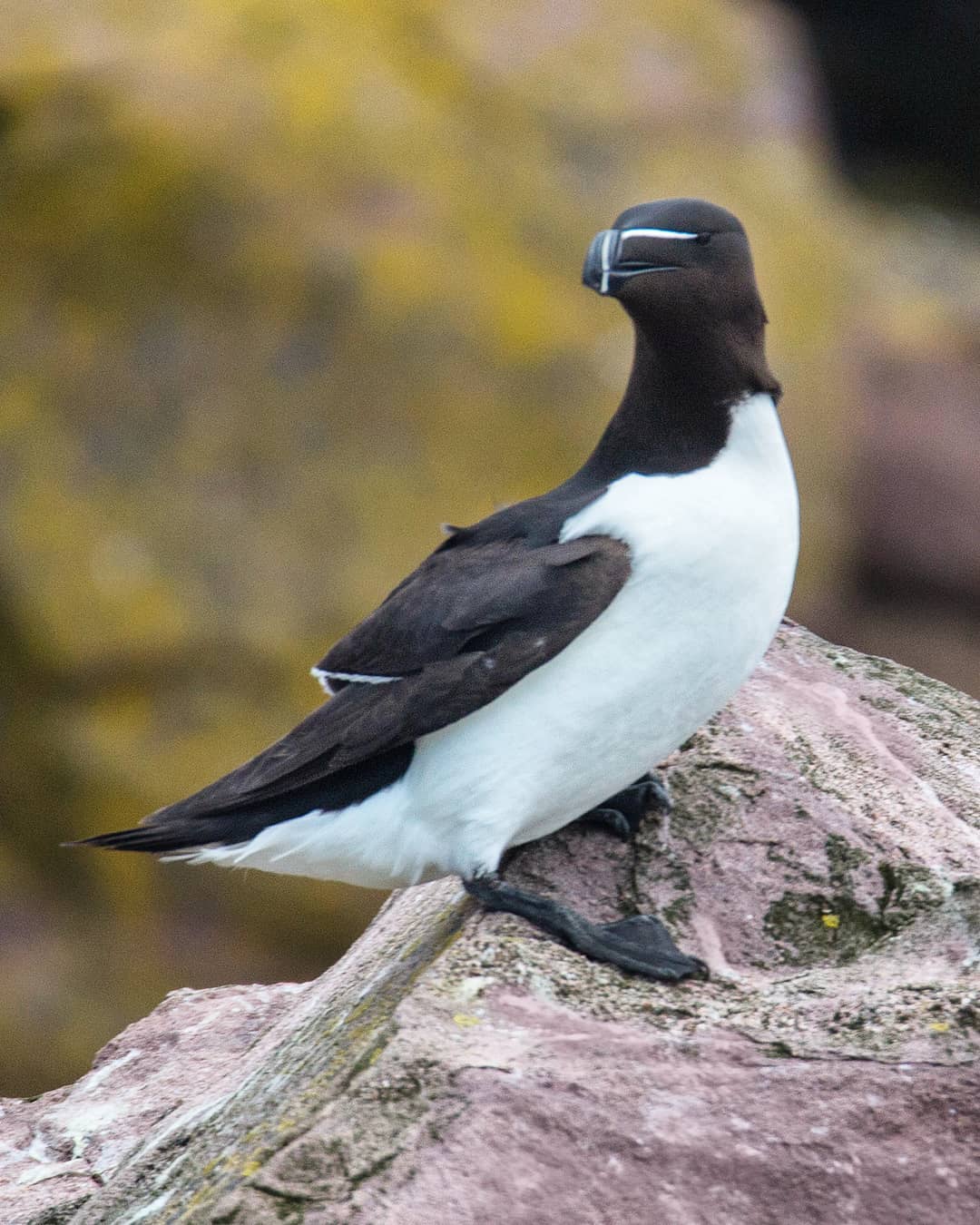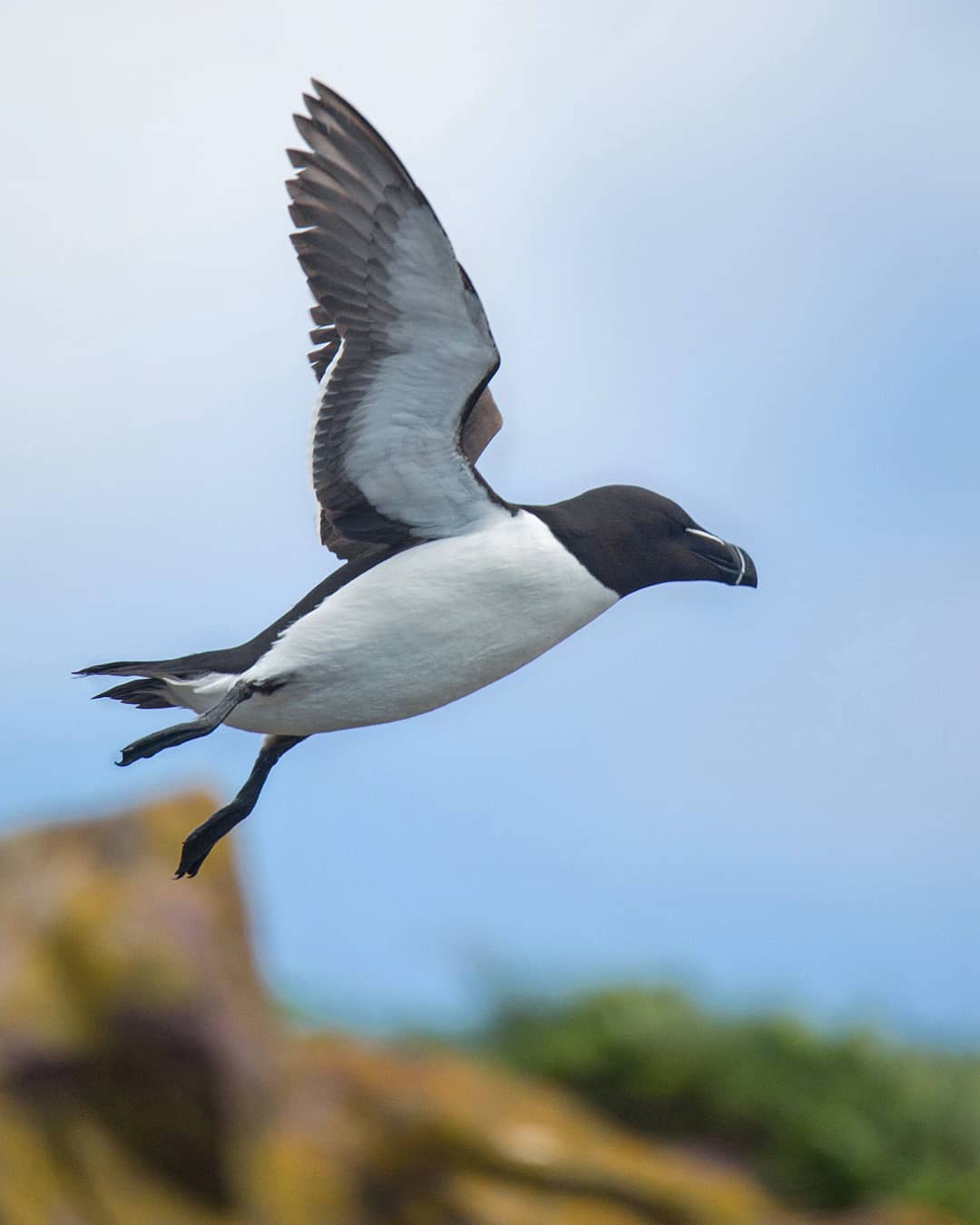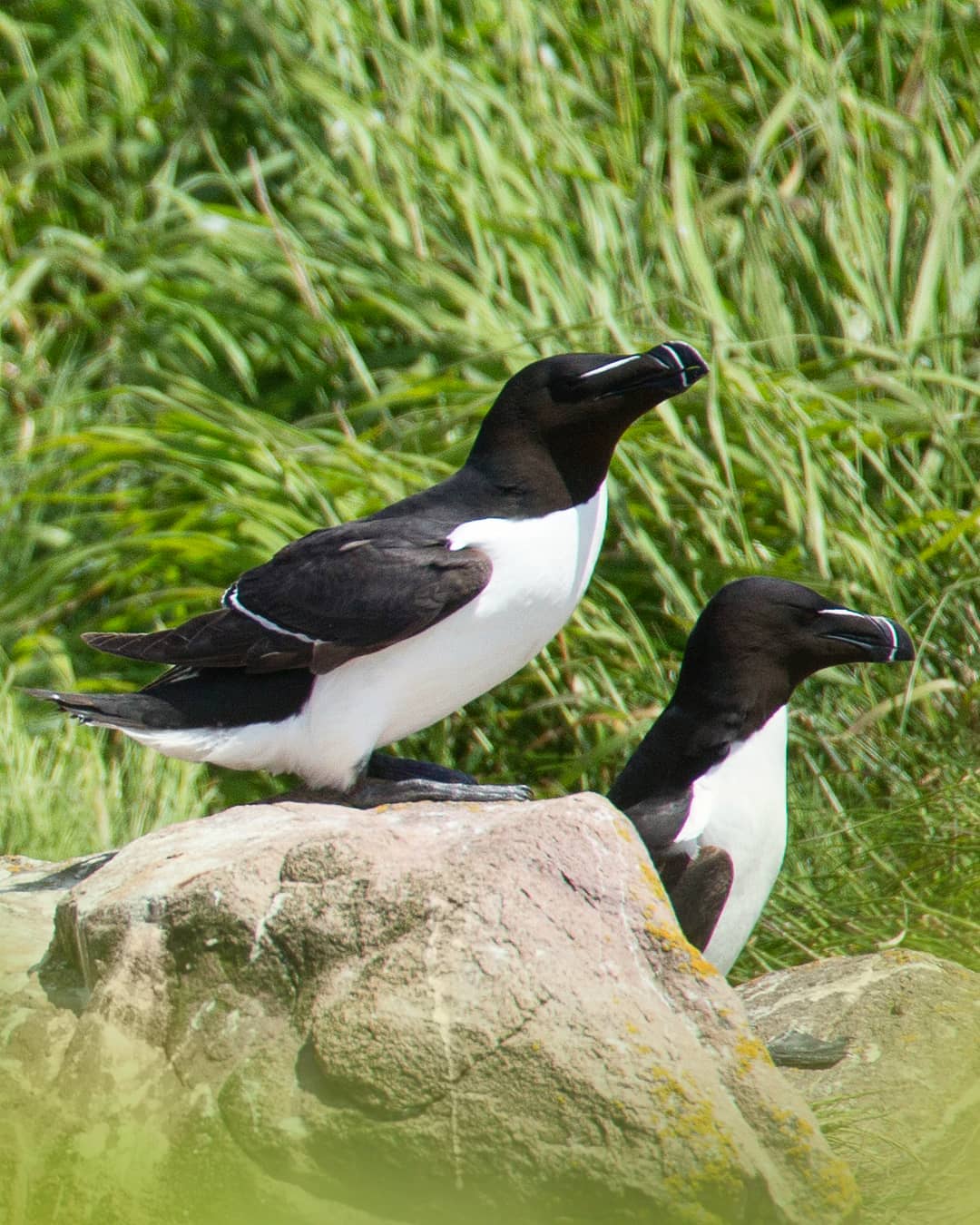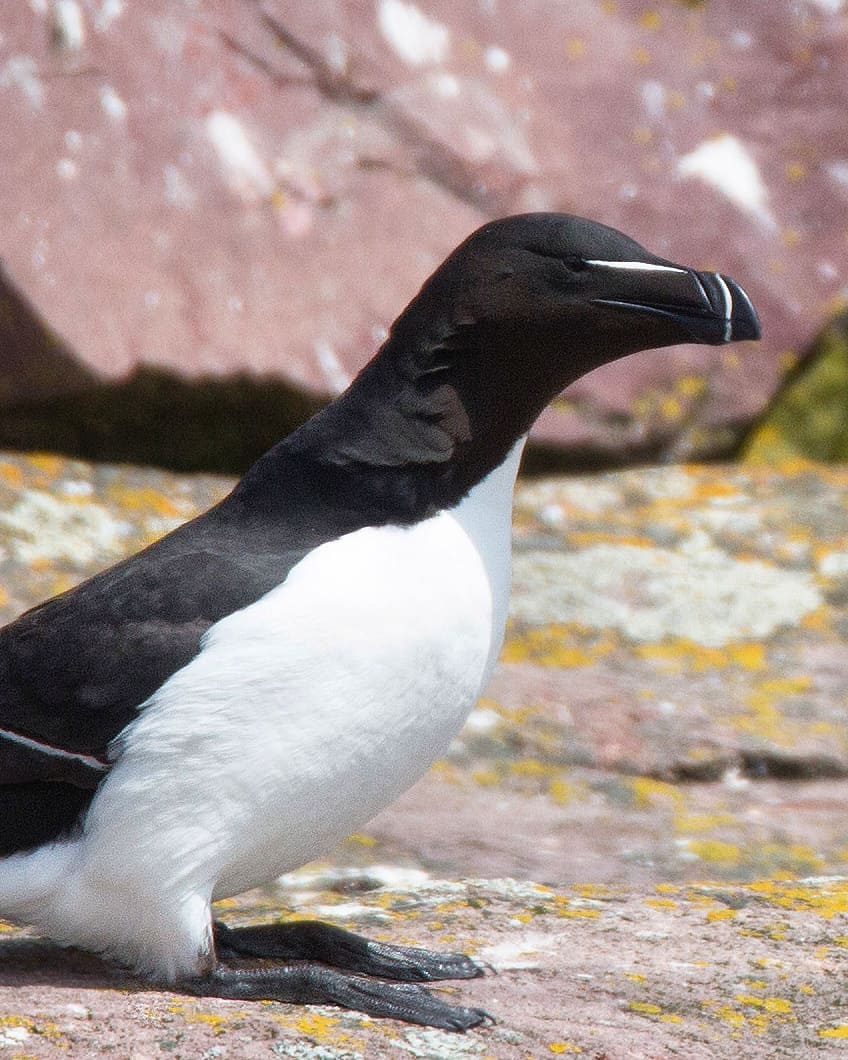While we didn’t see these birds in great numbers like some of the others on our East coast trip, they left a lasting impression on us nonetheless. This is a bird I had never heard of before planning our trip – the Razorbill.

The razorbill has a distinctive black head with beautiful thin white lines that extend from its eyes to the bill. It also has a black neck, back and feet. These contrast elegantly against it’s white underparts. I thought puffins looked very penguin-like, but I think these birds do even more! Male and Female razorbills look very similar, with very minor differences such as the length of their wings. The wingspan of razorbills range from 8 – 8.5 inches across, and they weigh between just over 1 pound to 2 pounds. Similar to puffins, their striking beauty is reserved for mating season. During the rest of the year, the throat and face (behind the eye) become white, and the thin characteristic line from their eye to their bill is muted. They live on average 13 years in the wild, however a record setting individual living in the UK was tagged in 1967 and lived to a staggering 41 years old. I hope you enjoy this new series on this small, nimble, and beautiful sea bird!

Similar to puffins, razorbills are quite the speedy flyers, with a wing designed to be a compromise between underwater swimming abilities and in air travel. Unlike the puffin, the razorbill has no pacific ocean counterpart, they are only found in the Atlantic region. One thing I found interesting to learn is that while razorbills share the same nesting areas as puffins they are actually not in competition with them for food. Razorbills prefer to hunt for larger fish than puffins. A puffin parent may return to their chick with a mouthful of fish while a razorbil may only have one larger fish to offer their young.
Unlike the puffin, the razorbill has no pacific ocean counterpart, they are only found in the Atlantic region.

Rasorbills start to breed at 3-5 years old and have quite elaborate social behaviours. A breeding pair will often remain together for life, and will court several times during their breeding months in order to strengthen their bond. Courting includes: elaborate flight patterns and tapping of their bills. Once the female is ready to lay her egg, the Male will guard his mate by using his bill to knock other males away. During the pre-laying period razorbills will socialize in large groups in 2 ways. The first is by diving and swimming in circles a number of times underwater in unison. They will then suddenly all rise up to the surface, heads first and bills open like synchronized swimmers! The second way they socialize is to swim in a line and weave across each other, while heading in the same direction. Unfortunately we did not come at the right time of year to witness this incredible display, but it must be a sight to see!

The estimated world population of razorbills is less than 1 million birds, and the majority of them breed in Iceland (60 – 70%). Because of this, it’s so important they are given the space they need to survive. Sadly this was not the case with another seabird, the Great Auk, was a large seabird in North America, only becoming extinct in the mid 19th century. It’s latin name: Pinguinus impennis is where the name “Penguin” came from, as this bird was discovered before the penguins in the south pole. The great auk was 30 to 33 in tall and weighed about 11 pounds. It wasn’t that different in appearance to the razorbill, having a white underbelly, and white patches around their eyes. The rest of their body was black. The last colony of great auks lived on an islet of volcanic rock off the coast of iceland surrounded by cliffs that made it inaccessible to humans. In 1830, the islet submerged after a volcanic eruption, and the birds moved to the nearby island of Eldey. This new location made them accessible from a single side. When the colony was first discovered in 1835, there were almost 50 birds. Museums, wanting great auk skins and eggs for preservation and display, quickly began collecting birds from the colony. The last pair, found incubating an egg, was killed on 3 June 1844, on request from a merchant who wanted specimens. such s tragic end to a magnificant bird. May we never repeat history.


